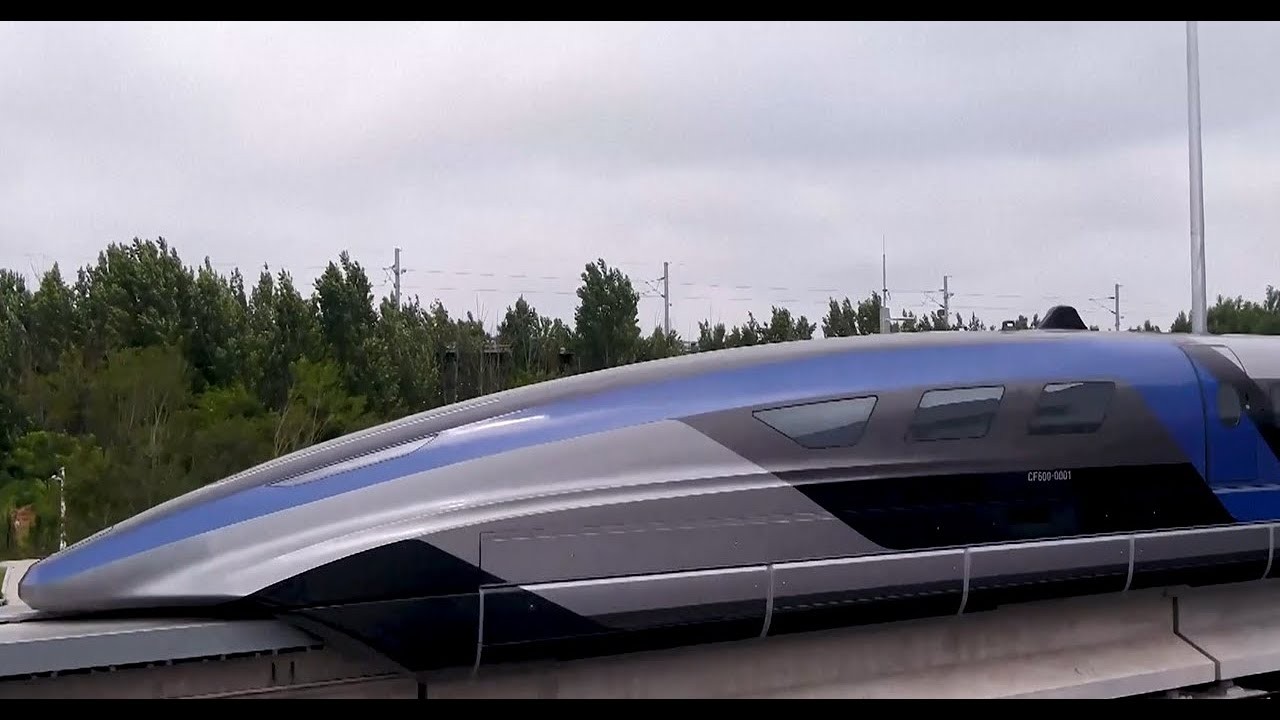Chinese scientists recently achieved the pinnacle of electromagnetic propulsion technology when they sent a 1,000-kilogram object at the speed of sound.
Observers say the breakthrough is a part of a national effort where electromagnetic drives are central to China’s actions in areas ranging from military use to mass transit transportation systems for space exploration.
The ‘electromagnetic sled’ in Jinan City, east China’s Shandong Province, accelerated a one-ton carriage to 1030 kilometers an hour (640 miles), potentially offering speed, reliability, and fossil-fuel independence in a single transport system.
China Global Television Network (CGTN) said the project is a collaborative effort between the Institute of Electrical Engineering (IEE) of the Chinese Academy of Sciences (CAS) and the governments of Shandong Province and Jinan City.
People’s Liberation Army Navy (PLAN) recently launched a Type 003 Fujian aircraft carrier with an Electromagnetic Launch System (EMALS) to lob fighter and other carrier-borne aircraft off its deck.
Some believe the project is a part of its goal to become a space power by mastering electromagnetic rail-based interplanetary transportation systems when colonization of the moon and Mars becomes common. China’s pursuit of advanced high-speed rail networks has always been known.
Mother-Of-All Electromagnetic Drive Tests?
The team built the world’s first ground-based, ultra-high-speed test facility using electromagnetic fields worth 3.3 billion yuan (US $456.58 million) as a part of the project, overcoming significant technological and engineering challenges, according to a report in the South China Morning Post (SCMP).
These included designing and building a high-thrust linear motor and a 100-megawatt power system.
“The facility’s power supply consists of two main components: coils mounted inside the carriage and a track to provide a strong magnetic field. Once a current is switched on in the coils, the magnetic field generates an electromagnetic force to push the carriage forward,” SCMP said. Maglev trains, electromagnetic rail guns, and EMALS on US Navy aircraft carriers are based on the same principle of using the propulsive effect of extremely powerful electromagnetic fields on objects.
However, SCMP mentioned high-speed maglev trains as one of the project’s priority areas. A trial of the world’s first 600 kilometers/hour maglev transport system in Qingdao in Shandong Province only ended in July 2021, for which scientists had developed an electronic control system.
The Jinan Daily in February 2020 recognized other spin-off areas to gain from the project’s success.
“Without a doubt, the electromagnetic sled will benefit China’s research in related fields and drive the rapid development of cutting-edge technologies, such as conversion and control of high-power electricity, superconducting under strong magnetic fields, and ultra high-speed electromagnetic propulsion,” the report said.

From Aircraft Carriers To Space Colonization
China’s third aircraft carrier, the Type 003 Fujian, launched in July this year, skipped the Catapult-Assisted Take-Off But Arrested Recovery (CATOBAR) transition to directly possess an EMALS system.
Its first aircraft carrier, the Liaoning, and the second, Shandong, had Short Take-Off But Arrested Recovery (STOBAR) systems, with a ski jump at the end of the flight decks.
As China’s military planners did not consider steam-powered CATOBARs as the next stage before EMALS, it bares the latter’s centrality towards the Communist country’s general techno-scientific pursuits.
Space exploration and the colonization of the moon and mars is another area China has been keenly eyeing, according to former US Assistant Secretary of Defense Chas Freeman.
But Freeman particularly mentions the Chinese space program to be heavily influenced by a 1976 book, The High Frontier: Human Colonies in Space, by Gerard K O’Neill. China affairs commentator Arnaud Bertrand posted a Twitter thread with clips of an online interaction where Freeman shares his views on the US policy towards China, besides mentioning China’s space program and O’Neill’s book.
The book talks about the need, inevitability, and effort of moving polluting industries and humans to the Moon and artificial habitats called O’Neill cylinders. These recreate the Earth’s atmosphere, geology, and gravity in outer space.
This is naturally predicted due to unsustainable population growth draining the Earth’s resources and climate change. While O’Neill proposes and theorizes these habitats will be made of materials from the Moon itself, they will be shot into space via “mass driver,” a form of electromagnetic catapult. O’Neill was a physics professor at Princeton University then.
Interestingly, Japan has officially announced such a vision – building artificial habitats and inter-planetary trains connecting the Earth, Moon, and Mars.
EurAsian Times had reported Kajima Construction and Kyoto University declaring wanting to develop an interplanetary ‘Hexatrack’ system on electromagnetic powered technology, besides recreating the Earth on the Moon and Mars.
- The author can be reached at satamp@gmail.com
- Follow EurAsian Times on Google News




